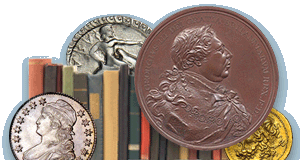
PREV ARTICLE
NEXT ARTICLE
FULL ISSUE
PREV FULL ISSUE
NEW BOOK: MEDALLIONS: POLITICS AND GENEROSITYThe new book Medallions: The Art of Politics and Generosity, published by Dumbarton Oaks, is available. Here's an overview and link to a PDF from the publisher's site. -Garrett
Medallions are among the most exquisite examples of Roman art from late antiquity surviving today. Distributed as gifts at imperial celebrations, they demonstrated an emperor"s generosity at moments of personal, political, and military triumph. Their images and inscriptions acted as propaganda to bolster the imperial regime and advertise its strength, success, and virtue. They also show us what emperors thought people expected of them. For their recipients, medallions were a mark of social status and imperial favor. Displaying medallions received from the emperor asserted one"s loyalty and place in the Roman hierarchy. As expressions of celebration and politics, favor and generosity, medallions offer us a glimpse of the intersection of art and empire at the end of the classical world. Although they are neither medals nor coins, medallions share some features of both those objects. They were given out during great state celebrations against a backdrop of imperial pageantry. Medallions functioned as gifts, signifying imperial generosity, and as art, spreading state propaganda. Generosity was an important imperial trait, and gift giving was both a symbol of this quality and a chance to reward and bind power groups to the emperor and his family. Medallion designs, almost always featuring an imperial portrait on the obverse and a reference to an event, imperial virtue, or other family members on the reverse, were exquisite examples of the engraver"s art designed to capture the majesty of the emperor"s person and the benefits of his rule. Under the Counts of the Sacred Largesses, Roman medallions entered a new phase. Previously, coin and medallion production had been handled by different officials, and medallions were created in a wide variety of sizes and weights. Constantine united these responsibilities under the counts, so medallions began to be struck in regular sizes based on multiples of the circulating currency and designs on elite medallions and widely circulating coins began to act as unified state propaganda. Constantine was equally innovative in his experimentation with the style and composition of the imperial portrait and the reverse designs used to express imperial power.
Thanks to Mike Markowitz for alerting us to this new exhibit catalog. -Editor
For more information, or to order, see:
Wayne Homren, Editor The Numismatic Bibliomania Society is a non-profit organization promoting numismatic literature. See our web site at coinbooks.org. To submit items for publication in The E-Sylum, write to the Editor at this address: whomren@gmail.com To subscribe go to: Subscribe All Rights Reserved. NBS Home Page Contact the NBS webmaster 
|





